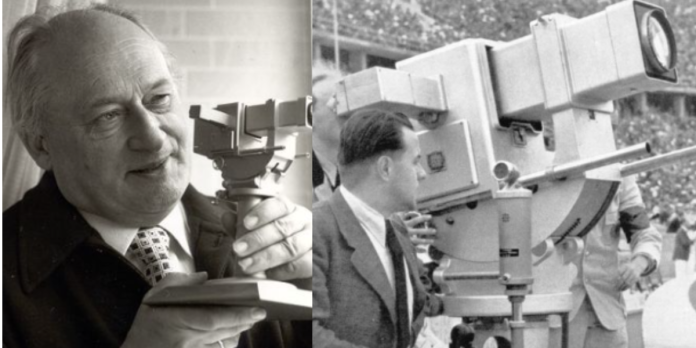
Walter Bruch: Redefining Surveillance With CCTV – A Visionary Engineer’s Legacy.
Date:

Share post:
Walter Bruch, a pioneering German engineer, made significant contributions to the field of television technology. While he is renowned for inventing the PAL color television system, his influence extended to other areas as well. Bruch played a pivotal role in revolutionizing the field of surveillance with the development of Closed-Circuit Television (CCTV). This article explores the life and accomplishments of Walter Bruch, focusing on his contributions to the world of CCTV, the impact of his inventions, and the lasting legacy he left behind.
During his career, Walter Bruch worked for the Telefunken company, where he focused on the development of television technology. In the early 1960s, he invented the Phase Alternating Line (PAL) system, which became the dominant color television standard in Europe and many other parts of the world. PAL improved the color reproduction and compatibility of television broadcasts, providing a more vibrant and consistent viewing experience for audiences.

In addition to his contributions to color television, Walter Bruch also made advancements in other areas of television technology, including the development of video cameras and transmission systems. His expertise and innovations played a crucial role in shaping the television industry and establishing standards that are still in use today.
CCTV, or Closed-Circuit Television, refers to a system of video cameras that capture and transmit visual signals to a limited set of monitors. It differs from traditional television broadcasting as it operates within a closed circuit, providing real-time monitoring and surveillance. While the concept of closed-circuit television had been around for some time, it was Walter Bruch who played a crucial role in its development and widespread adoption.
Bruch recognized the potential of closed-circuit television as a powerful tool for surveillance and security applications. Drawing on his expertise in television technology, he sought to improve the quality and functionality of CCTV systems. Bruch’s contributions included advancements in camera design, signal transmission, and display technologies.
One of Bruch’s notable achievements was the development of the Vidicon camera tube, which revolutionized video surveillance. This highly sensitive camera tube allowed for better image quality, even in low-light conditions. Bruch also played a key role in refining the transmission and display technologies used in CCTV systems, ensuring clearer and more reliable video monitoring.
The introduction of CCTV systems brought about a paradigm shift in surveillance and security practices. By enabling real-time monitoring and recording of video footage, CCTV systems provided enhanced security measures for public spaces, businesses, and private properties. They became essential tools for crime prevention, investigation, and evidence collection.
Also Read: Dr. Vijayalakshmi Ramanan, the Trailblazing Woman IAF Officer and Lifesaving Doctor

Walter Bruch’s innovations in CCTV technology made surveillance more accessible and effective. His advancements in camera design and image quality raised the bar for video monitoring capabilities, enabling clearer identification of individuals and incidents. The ability to transmit video signals over longer distances and display them on multiple monitors improved the scalability and flexibility of CCTV systems.
Walter Bruch’s contributions to CCTV technology continue to have a lasting impact. His pioneering work laid the foundation for the evolution of surveillance systems, with modern CCTV solutions incorporating advanced digital technologies, network connectivity, and intelligent video analytics.
Today, CCTV systems are ubiquitous, safeguarding public areas, transportation networks, commercial establishments, and homes. They serve as a deterrent against criminal activities and provide crucial evidence for investigations. The advancements in CCTV technology also find applications beyond security, such as traffic monitoring, crowd management, and industrial processes.
Walter Bruch’s innovations in CCTV technology transformed surveillance practices, enhancing security measures and enabling effective monitoring and crime prevention. Walter Bruch’s achievements earned him numerous accolades, including the prestigious David Sarnoff Medal from the Society of Motion Picture and Television Engineers (SMPTE) in 1975. He passed away on May 5, 1990, leaving behind a lasting legacy as one of the pioneers in television technology and a visionary engineer who transformed the way we experience televised visuals.
Also Read: Nazia Hassan, The Queen of South Asian Pop Whose Music Transcends Generations
